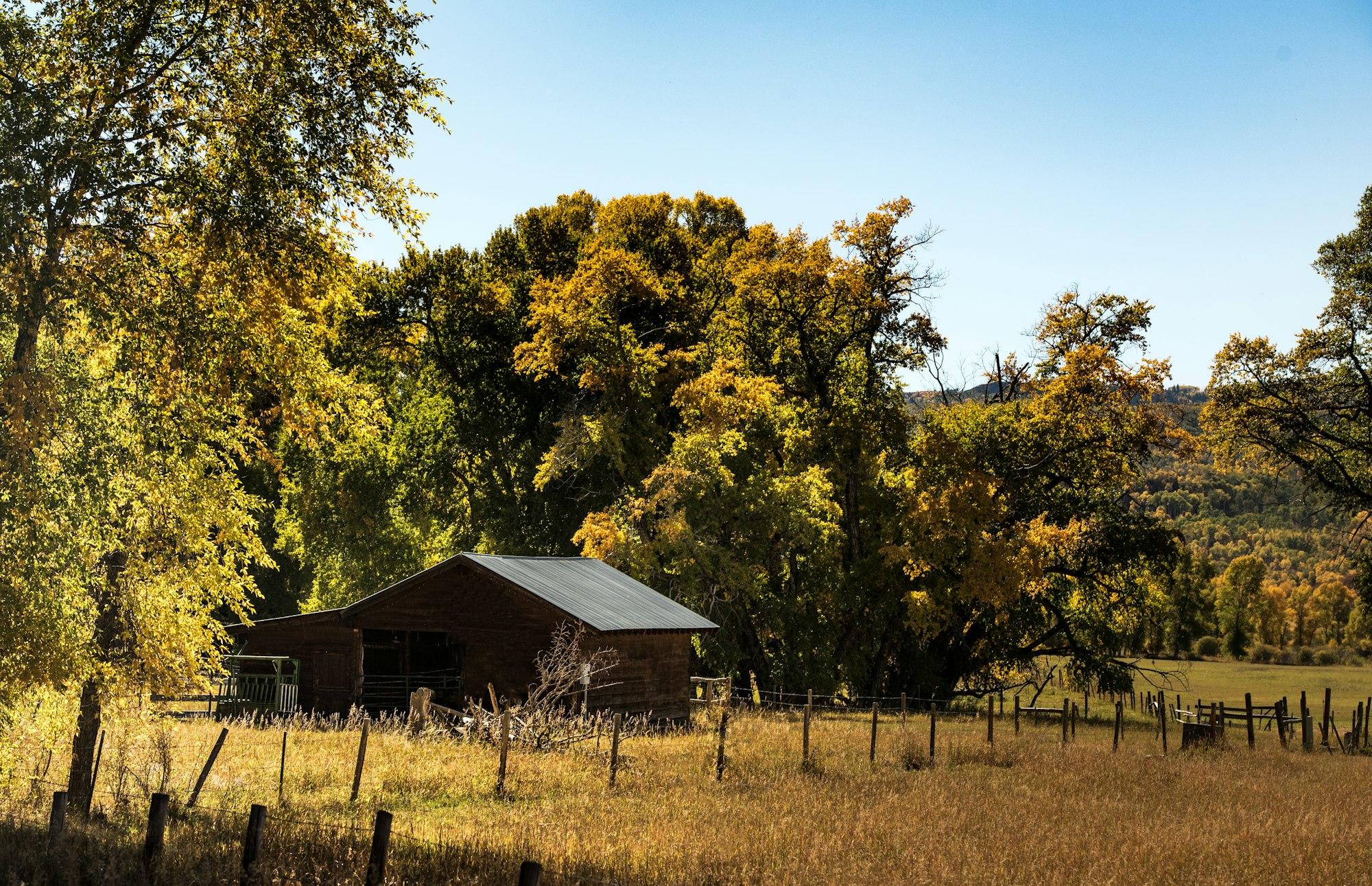What Is a “Raised Ranch” House, Anyway?
A raised ranch is a split-level home design that maximizes space with its two-level layout, featuring main living areas upstairs and additional rooms below.

Photo by Nathan Anderson
When it comes to home styles, the term "raised ranch" might sound a bit enigmatic. Yet, this architectural design has been a staple in suburban landscapes since the mid-20th century. Known for its practicality and efficient use of space, the raised ranch offers a unique blend of form and function. But what exactly defines a raised ranch, and why has it remained a popular choice for homeowners? In this article, we will delve deeper into the characteristics, advantages, and considerations of raised ranch homes, as well as explore their cultural significance and the various ways they can be customized to suit individual preferences.
The Origins of the Raised Ranch
The raised ranch emerged in the United States during the post-World War II housing boom. As families grew and suburban areas expanded, there was a demand for affordable, efficient housing that could accommodate the needs of modern families. The raised ranch was born out of this necessity, offering a practical solution with its split-level design. This architectural style was influenced by earlier ranch-style homes, which emphasized single-story living, but the raised ranch introduced a new dynamic by incorporating a second level, thus maximizing space without requiring a larger footprint. The design quickly gained popularity, particularly in the suburbs of cities like Chicago, Detroit, and Los Angeles, where land was available and families were looking for homes that could grow with them.
Key Features of a Raised Ranch
A raised ranch is characterized by its two-level structure, where the entryway is typically located between the upper and lower floors. This design allows for a compact footprint while maximizing interior space. The upper level usually contains the main living areas, such as the kitchen, living room, and bedrooms, while the lower level often includes additional living space, such as a family room or extra bedrooms. The layout is particularly advantageous for families with children, as it allows for separation between adult and children's spaces, promoting both privacy and togetherness. Furthermore, the raised ranch often features a garage on the lower level, which can be accessed directly from the interior, providing convenience and security for homeowners.

One of the defining features of a raised ranch is its exterior appearance. The front facade often presents a symmetrical look with large windows, providing ample natural light to the upper level. The lower level, partially below ground, may have smaller windows or a garage, contributing to the home's distinctive split-level appearance. This design not only enhances the aesthetic appeal of the home but also allows for better energy efficiency, as the lower level can maintain a more stable temperature throughout the year. Additionally, many raised ranch homes feature a combination of materials, such as brick, wood, and vinyl siding, which can be customized to reflect the homeowner's personal style and the surrounding neighborhood.
Benefits of a Raised Ranch
The raised ranch design offers several advantages that have contributed to its enduring popularity. Firstly, its compact design makes it an ideal choice for smaller lots, allowing homeowners to maximize their living space without sacrificing outdoor areas. Additionally, the separation of living spaces can provide privacy and flexibility for families, with the lower level often serving as a versatile space for recreation or guest accommodations. This adaptability is particularly appealing to homeowners who may want to create a home office, playroom, or even a rental unit in the lower level, providing additional income potential.
Another benefit is the cost-effectiveness of the raised ranch. The straightforward design and efficient use of materials often result in lower construction costs compared to more complex architectural styles. This affordability, combined with the functional layout, makes the raised ranch an attractive option for first-time homebuyers and growing families alike. Moreover, the potential for future renovations and expansions can further enhance the value of a raised ranch, making it a wise investment for homeowners looking to build equity over time. The ability to easily add additional bedrooms or bathrooms, or even convert the lower level into a fully functional living space, can significantly increase the home's resale value.
Designing Your Raised Ranch
While the basic structure of a raised ranch is consistent, there are numerous ways to personalize and enhance this home style. From interior layouts to exterior finishes, homeowners have the opportunity to create a space that reflects their individual tastes and lifestyle needs. The design process can be an exciting journey, allowing homeowners to explore various themes, colors, and materials that resonate with their personal aesthetic. Whether opting for a modern, minimalist approach or a more traditional, cozy feel, the raised ranch can be tailored to suit any preference.
Interior Design Considerations
When designing the interior of a raised ranch, it's important to consider the flow between the upper and lower levels. Open floor plans are popular, allowing for seamless transitions between living spaces and creating a sense of openness. Homeowners may also choose to incorporate modern amenities, such as updated kitchens and bathrooms, to enhance the functionality and appeal of their home. The kitchen, often considered the heart of the home, can be designed with an island for additional counter space and seating, making it a perfect gathering spot for family and friends. Furthermore, incorporating energy-efficient appliances can not only reduce utility costs but also contribute to a more sustainable lifestyle.
Storage solutions are another key consideration in a raised ranch. With limited space, efficient storage options can help maintain a clutter-free environment. Built-in shelving, under-stair storage, and multi-functional furniture are all effective ways to maximize space and keep the home organized. Additionally, utilizing vertical space through the installation of tall cabinets or shelving units can help homeowners make the most of their square footage. Creative storage solutions, such as hidden compartments or furniture that doubles as storage, can also add a unique touch to the home's interior while enhancing its functionality.
Exterior Enhancements
The exterior of a raised ranch can be customized to suit a variety of architectural styles, from traditional to contemporary. Homeowners may choose to update the facade with new siding, roofing, or landscaping to enhance curb appeal. Adding a porch or deck can also provide additional outdoor living space, perfect for entertaining or relaxing. Outdoor spaces can be designed to include features such as fire pits, outdoor kitchens, or even gardens, creating an inviting atmosphere for gatherings and family activities. The integration of outdoor lighting can further enhance the ambiance, allowing homeowners to enjoy their outdoor spaces well into the evening.

Landscaping plays a crucial role in the overall aesthetic of a raised ranch. Thoughtful landscaping can soften the lines of the home and create a welcoming entrance. Consider incorporating native plants, walkways, and lighting to enhance the home's exterior and complement its architectural style. Additionally, the use of hardscaping elements, such as stone pathways or retaining walls, can add texture and visual interest to the landscape. Homeowners may also want to consider sustainable landscaping practices, such as xeriscaping or the use of rain gardens, to promote environmental stewardship while enhancing the beauty of their property.
Challenges and Considerations
While the raised ranch offers many benefits, there are also challenges to consider. The split-level design can present accessibility issues for individuals with mobility challenges, as stairs are often required to access the main living areas. Homeowners may need to explore modifications or alternative solutions to address these concerns. For instance, installing a stairlift or considering a ramp can make the home more accessible for those with mobility limitations. Additionally, planning for future needs, such as aging in place, can help ensure that the home remains functional and comfortable for all residents.
Energy Efficiency
Energy efficiency is another consideration for raised ranch homeowners. The design of the home, with its large windows and split-level structure, can impact heating and cooling costs. Implementing energy-efficient solutions, such as upgraded insulation, energy-efficient windows, and modern HVAC systems, can help reduce utility expenses and improve overall comfort. Homeowners may also want to consider incorporating smart home technology, such as programmable thermostats and energy monitoring systems, to further enhance energy efficiency and convenience. These technologies can provide homeowners with valuable insights into their energy usage, allowing them to make informed decisions about their consumption habits.
Additionally, the orientation of the home can influence energy efficiency. Homes with southern exposure can take advantage of passive solar heating, while strategic landscaping can provide shade and reduce cooling costs during warmer months. Installing solar panels can also be a worthwhile investment, providing renewable energy and potentially lowering electricity bills. By taking a comprehensive approach to energy efficiency, raised ranch homeowners can create a comfortable living environment while minimizing their environmental impact.
Resale Value
When considering a raised ranch, it's important to think about long-term resale value. While these homes have remained popular, market trends and buyer preferences can influence demand. Keeping the home updated and well-maintained can help preserve its value and appeal to potential buyers in the future. Regular maintenance, such as roof inspections, gutter cleaning, and landscaping upkeep, can prevent larger issues down the line and ensure that the home remains in excellent condition. Additionally, making strategic renovations, such as updating kitchens and bathrooms or enhancing curb appeal, can significantly increase the home's market value.
Overall, the raised ranch offers a practical and versatile housing option that continues to meet the needs of modern families. With thoughtful design and careful consideration of potential challenges, homeowners can create a comfortable and stylish living space that stands the test of time. As the housing market evolves, the raised ranch remains a relevant and appealing choice for those seeking a balance of functionality, affordability, and aesthetic appeal. Whether you are a first-time homebuyer or looking to downsize, the raised ranch can provide a welcoming and adaptable environment for all stages of life.
Quick facts
What is the difference between a raised ranch and a ranch house?
A raised ranch features a split-level design with living areas above a partially submerged basement, while a ranch house is a single-story structure with all rooms on one level.
What is another name for a raised ranch?
Another name for a raised ranch is a split-entry home, highlighting its design with separate entry levels for the main living area and the lower level.
Why are raised ranches harder to sell?
Raised ranches can be harder to sell due to their dated design, limited curb appeal, and less functional layout compared to modern open floor plans.
What is a raised house?
A raised house is a structure elevated on stilts or a foundation to protect it from flooding or improve airflow, common in flood-prone areas.

Dane Hurtubise
Co-founder & CEO of Spoken
Dane Hurtubise is the Co-founder & CEO of Spoken. He has led two venture-backed companies and is a two-time Y Combinator alum. Prior to Spoken, Dane sold his previous company, Parklet, to Greenhouse Software where he served as VP of Platform and Partnerships. An avid runner, cyclist, and Pilates enthusiast, Dane holds a BS in Electrical and Computer Engineering from the University of Texas at Austin.
Read more

